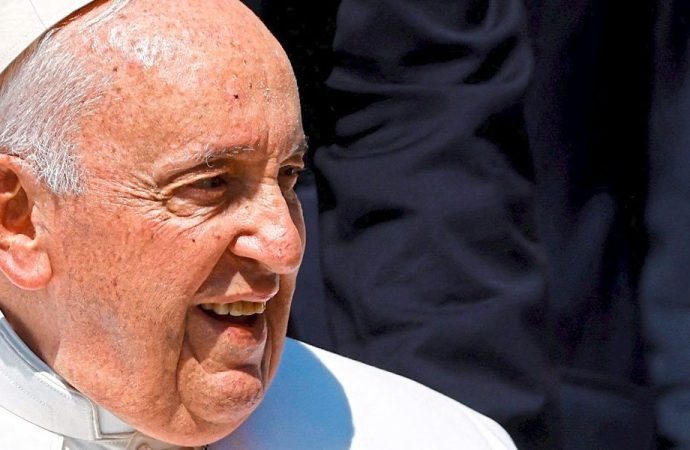For the first time in ten years, Pope Francis welcomed His Holiness Aram I, the head of the Armenian Church of Cilicia, into his personal office at the Vatican. Aram I, who leads approximately 800,000 Armenian Christians across Lebanon, Syria, Cyprus, Iran, and Greece, brings his extensive leadership to critical regions. Reflecting on a Decade-Long
For the first time in ten years, Pope Francis welcomed His Holiness Aram I, the head of the Armenian Church of Cilicia, into his personal office at the Vatican. Aram I, who leads approximately 800,000 Armenian Christians across Lebanon, Syria, Cyprus, Iran, and Greece, brings his extensive leadership to critical regions.
Reflecting on a Decade-Long Gap
The last encounter between Pope Francis and Aram I was in June 2014. During that significant meeting, Pope Francis expressed deep appreciation for Aram I’s dedication to achieving Christian unity. He also emphasized the importance of honoring the suffering of the Armenian martyrs, equating their wounds with those of Christ. This recent meeting symbolizes a pivotal moment in the relationship between the Vatican and the Armenian Church of Cilicia.
The Armenian Church of Cilicia: An Integral Entity
The Armenian Church of Cilicia is a vital part of the broader Armenian Apostolic Church, which has a membership exceeding 5 million globally. Besides its significant presence in Lebanon, Syria, Cyprus, Iran, and Greece, the Armenian Church of Cilicia has two dioceses and 34 parishes in the United States, along with six parishes in Canada. Although it is in full communion with the Armenian Apostolic Church, the Armenian Church of Cilicia operates administratively independent from the Apostolic Church in Armenia.
Armenia’s Unique Christian Heritage
Armenia holds a unique position in Christian history as the first country to adopt Christianity as its state religion in the early fourth century. King Tiridates III’s conversion by St. Gregory the Illuminator marked this monumental shift. However, in 506, the Armenian Church declared its autonomy after rejecting the Christological teachings of the Council of Chalcedon, which no Armenian bishops attended. The Armenian Church established its own patriarch, the Catholicos, as the head of the Christian community beyond the Roman Empire’s control.
The 1996 Joint Declaration: A Milestone in Unity
In December 1996, St. John Paul II and His Holiness the Catholicos of all Armenians, Karekin II, signed a significant joint declaration. This agreement affirmed the common origins and shared faith between the Armenian Church and the Roman Catholic Church. It was a historic step that deepened the ties and mutual recognition between these two ancient Christian traditions.
Aram I: A Leader in the Armenian Church
His Holiness Aram I, born in Beirut, Lebanon, has served as the Catholicos of the Armenian Church of Cilicia since 1995. His extensive theological and ecumenical education includes studies at the Armenian Theological Seminary of Antelias and the Ecumenical Institute of Bossey in Geneva. Aram I is a prominent figure not only in the Armenian Church but also within the wider Christian ecumenical movement.
Promoting Christian Unity: Aram I’s Contributions
Aram I has played a crucial role in fostering unity among various Christian denominations. He founded the Middle East Council of Churches and initiated theological dialogues between the Byzantine Orthodox and Eastern Orthodox Churches. His efforts have significantly promoted understanding and cooperation within the diverse Christian community in the Middle East, showcasing the Armenian Church’s commitment to unity.
The Armenian Church’s Role in Contemporary Christianity
The Armenian Church remains a cornerstone of the global Christian faith. Its historical importance, coupled with its active presence in various regions, underscores its vital role in modern Christianity. The Armenian Church’s ability to uphold its traditions while engaging with other Christian denominations highlights its unique position in the global religious landscape.
Navigating Challenges and Seizing Opportunities
The Armenian Church faces numerous challenges, including geopolitical tensions and the need for religious and cultural preservation. Despite these hurdles, there are opportunities for growth and renewal. By fostering dialogue and collaboration with other Christian communities, the Armenian Church can continue to be a beacon of faith and resilience.
The Future Vision for the Armenian Church
Looking forward, the Armenian Church‘s role in promoting peace and unity remains critical. As it navigates the complexities of modern Christianity, the Armenian Church’s dedication to its traditions and openness to dialogue will be essential for its continued influence and relevance in the global Christian community.
Conclusion: Strengthening Bonds Through Dialogue
The recent meeting between Pope Francis and Aram I underscores the enduring importance of dialogue and mutual respect among Christian denominations. The Armenian Church‘s rich history and ongoing contributions to Christian unity highlight its pivotal role in the global Christian landscape. As leaders like Aram I and Pope Francis continue to engage in meaningful conversations, the bonds between their communities will grow stronger, paving the way for a more unified Christian world.
















